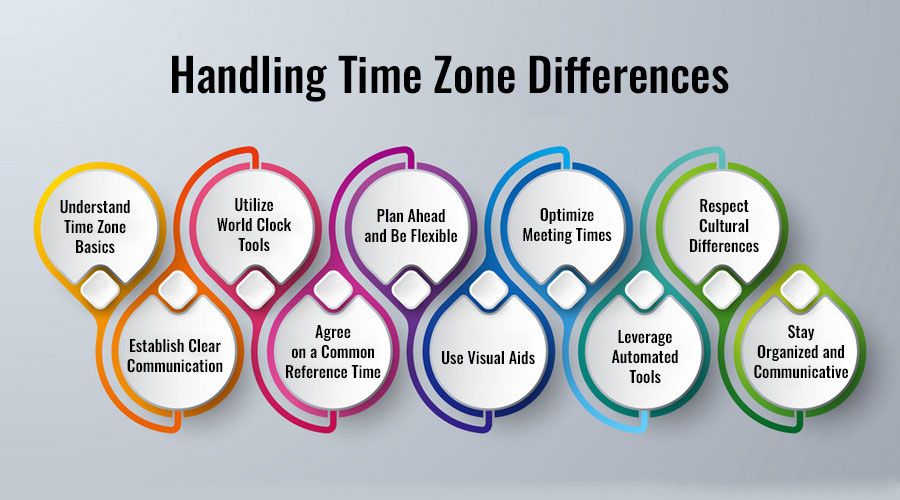Table of Contents
Understanding Remote Developer Roles
In today’s digital age, remote work has become increasingly prevalent across various industries. Among these, the field of software development stands out as a prime example of how remote roles have revolutionized traditional work structures. Understanding remote developer roles is crucial for both employers and aspiring professionals in the tech industry. In this guide, we delve into the intricacies of remote developer positions, exploring their benefits, challenges, and best practices.
The Rise of Remote Development
Remote developer roles have surged in popularity due to several factors:
- Global Talent Pool: With remote work, companies can tap into a vast global talent pool, allowing them to hire the best developers regardless of geographical constraints.
- Cost Savings: Employers can significantly reduce overhead costs associated with office space and amenities by embracing remote development teams.
- Work-Life Balance: Remote roles offer developers the flexibility to work from anywhere, promoting a healthier work-life balance and improving job satisfaction.
Types of Remote Developer Roles
Remote developer positions span various specialties, including:
- Software Engineers: These developers focus on designing, coding, and testing software applications. They require strong programming skills and expertise in languages like Python, Java, or JavaScript.
- Web Developers: Web developers specialize in building and maintaining websites and web applications. They possess proficiency in HTML, CSS, and JavaScript, along with frameworks like React or Angular.
- Mobile App Developers: Developers in this role create applications for mobile devices, such as smartphones and tablets. They often work with platforms like iOS (using Swift) or Android (using Java or Kotlin).
- DevOps Engineers: DevOps engineers bridge the gap between software development and IT operations. They automate processes, manage infrastructure, and ensure smooth deployment and delivery pipelines.
Key Skills and Qualities
Successful remote developers exhibit certain skills and qualities essential for remote work:
- Communication: Effective communication skills are paramount for remote developers to collaborate with team members, convey ideas clearly, and resolve issues promptly.
- Self-Motivation: Remote developers must be self-driven and disciplined, capable of managing their time efficiently and staying focused without direct supervision.
- Problem-Solving: Strong problem-solving abilities enable remote developers to tackle complex issues independently and contribute innovative solutions to projects.
- Adaptability: Given the dynamic nature of remote work, developers must adapt to different time zones, tools, and communication channels to thrive in diverse environments.
Overcoming Challenges
While remote developer roles offer numerous advantages, they also present unique challenges:
- Isolation: Remote developers may experience feelings of isolation due to limited social interaction. Employers can mitigate this by fostering a supportive team culture and organizing virtual gatherings.
- Communication Barriers: Without face-to-face interaction, miscommunication can occur more easily. Employers should encourage transparent communication and utilize tools like video conferencing and instant messaging.
- Time Zone Differences: Coordinating across different time zones can pose logistical challenges for remote teams. Establishing clear expectations and scheduling regular meetings at convenient times can help mitigate this issue.
Best Practices for Remote Development
To maximize productivity and efficiency in remote developer roles, consider implementing the following best practices:
- Set Clear Expectations: Clearly define project goals, deadlines, and communication protocols to ensure alignment among remote team members.
- Use Collaboration Tools: Leverage collaboration tools like Slack, Zoom, or Microsoft Teams to facilitate seamless communication and project management.
- Establish Regular Check-Ins: Schedule regular check-in meetings to provide updates, address concerns, and maintain team cohesion.
- Promote Work-Life Balance: Encourage remote developers to establish boundaries between work and personal life to prevent burnout and maintain well-being.
Advantages of Hiring Remote Developers
In recent years, the workforce landscape has undergone a significant transformation, with remote work becoming more prevalent across various industries. This shift has led to the rise of remote developers, who offer a myriad of advantages to companies looking to stay ahead in the digital age. In this article, we’ll explore the numerous benefits of hiring remote developers and why businesses should embrace this innovative approach to talent acquisition.
- Access to Global Talent Pool: One of the most compelling advantages of hiring remote developers is the ability to tap into a diverse and global talent pool. Unlike traditional hiring methods limited by geographical boundaries, remote hiring allows businesses to recruit top-tier talent from anywhere in the world. This opens up opportunities to collaborate with experts who bring unique perspectives and skill sets to the table, ultimately enhancing the quality of projects and driving innovation.
- Cost Savings: Hiring remote developers can lead to significant cost savings for businesses. By eliminating the need for physical office space, companies can reduce overhead expenses associated with facilities, utilities, and maintenance. Additionally, remote work often enables companies to access talent from regions with lower living costs, allowing them to offer competitive compensation packages while staying within budget constraints.
- Increased Productivity: Remote developers are known for their high levels of productivity and efficiency. Freed from the distractions of the traditional office environment, remote workers often have greater autonomy over their schedules, allowing them to optimize their workflow and focus on delivering results. Moreover, remote teams are adept at leveraging digital collaboration tools and communication platforms to streamline project management and foster seamless collaboration, resulting in faster turnaround times and improved project outcomes.
- Flexible Work Arrangements: Offering remote work opportunities can be a powerful incentive for attracting top talent and fostering employee satisfaction. Remote developers appreciate the flexibility to work from anywhere, whether it’s from the comfort of their home, a co-working space, or a different country altogether. This flexibility enables individuals to achieve a better work-life balance, leading to higher job satisfaction and retention rates.
- Diverse Perspectives and Innovation: Remote teams often comprise individuals from different cultural backgrounds, experiences, and perspectives. This diversity fosters creativity and innovation, as team members bring unique insights to problem-solving and decision-making processes. By harnessing the collective intelligence of a diverse remote workforce, companies can drive innovation, adapt to market changes more effectively, and gain a competitive edge in their respective industries.
- Scalability and Agility: Remote hiring offers unparalleled scalability and agility for businesses, particularly startups and growing companies. With remote developers, organizations can quickly scale their teams up or down in response to fluctuating project demands or market conditions. This agility enables businesses to stay nimble and responsive in a rapidly evolving landscape, without being constrained by traditional hiring timelines or geographic limitations.
Challenges in Hiring Remote Developers
In the rapidly evolving landscape of software development, the demand for remote developers has surged dramatically. As businesses embrace remote work arrangements, the pool of talent accessible to them has expanded exponentially. However, despite the myriad benefits associated with hiring remote developers, there are significant challenges that both employers and developers face in this paradigm shift.
1. Communication Barriers: One of the foremost challenges in hiring remote developers is overcoming communication barriers. Unlike traditional in-office settings where face-to-face interactions are commonplace, remote teams rely heavily on digital communication channels. Misunderstandings can easily arise due to differences in time zones, cultural nuances, or even language barriers. Employers need to invest in robust communication tools and establish clear communication protocols to mitigate these challenges effectively.
2. Maintaining Team Cohesion: Building a cohesive team spirit can be challenging when team members are dispersed across different locations. Remote developers may feel isolated or disconnected from their colleagues, leading to decreased morale and productivity. Employers must proactively foster a sense of belonging and camaraderie among remote team members through virtual team-building activities, regular check-ins, and fostering an inclusive company culture.
3. Time Zone Differences: Time zone disparities can pose logistical challenges, especially in teams spanning multiple geographic regions. Scheduling meetings, coordinating project timelines, and ensuring real-time collaboration can become cumbersome tasks. Employers should strive to find a balance that accommodates the diverse time zones of their remote team members, leveraging asynchronous communication when necessary and establishing overlapping work hours for critical discussions.
4. Assessing Technical Skills Remotely: Evaluating the technical skills of remote developers presents a unique set of challenges compared to in-person interviews or coding assessments. Traditional methods may not accurately gauge a candidate’s proficiency or adaptability in a remote work environment. Employers can overcome this hurdle by implementing comprehensive technical assessments, conducting pair-programming sessions, and soliciting work samples or contributions to open-source projects.
5. Security Concerns: Remote work introduces new security vulnerabilities, particularly concerning data protection and intellectual property. Accessing sensitive company information from personal devices or unsecured networks increases the risk of data breaches or cyber-attacks. Employers must prioritize cybersecurity measures such as implementing robust VPNs, enforcing multi-factor authentication, and conducting regular security audits to safeguard their digital assets.
6. Establishing Trust: Trust is the cornerstone of successful remote collaborations. Employers may struggle to establish trust with remote developers whom they have not met in person. Likewise, remote developers may harbor reservations about the credibility or reliability of their employers. Building trust requires transparent communication, delivering on commitments, and fostering a culture of accountability and mutual respect.
7. Onboarding and Integration: Effectively onboarding remote developers into existing teams poses logistical challenges. Providing comprehensive training, acclimating new hires to company policies and procedures, and integrating them into project workflows remotely requires careful planning and execution. Employers should develop structured onboarding programs, assign mentors or buddy systems, and leverage technology platforms for seamless knowledge transfer and collaboration.
Evaluating Remote Developer Skills and Experience
In today’s tech-driven world, remote work has become more prevalent than ever, and with it comes the challenge of effectively evaluating the skills and experience of remote developers. As businesses embrace distributed teams, it’s crucial to have robust strategies in place for assessing the capabilities of potential remote developers. In this article, we’ll delve into the key considerations and best practices for evaluating remote developer skills and experience.
- Define Clear Criteria: Before diving into the evaluation process, it’s essential to establish clear criteria for what you’re looking for in a remote developer. This could include technical skills such as programming languages, frameworks, and tools relevant to your projects, as well as soft skills like communication, problem-solving, and time management.
- Utilize Remote-Friendly Assessment Methods: Traditional methods of evaluating developers, such as in-person interviews or whiteboard coding sessions, may not be practical for remote candidates. Instead, leverage remote-friendly assessment methods such as online coding tests, pair programming sessions via video conferencing, and take-home projects that simulate real-world scenarios.
- Evaluate Communication Skills: Effective communication is paramount in remote work environments. Evaluate candidates’ communication skills through video interviews, email exchanges, and collaborative exercises to ensure they can articulate ideas clearly, ask questions, and work effectively with remote teams.
- Assess Remote Work Experience: Experience with remote work environments is a valuable asset for remote developers. Look for candidates who have previously worked remotely or demonstrate the ability to thrive in a distributed team setting. Ask about their experience with remote communication tools, time management techniques, and overcoming challenges inherent to remote work.
- Review Past Projects and Contributions: A candidate’s past projects and contributions can provide valuable insights into their skills and experience. Review their portfolio, GitHub profile, or contributions to open-source projects to assess the quality of their work, coding style, and ability to collaborate with others.
- Seek Feedback from References: Reach out to references provided by the candidate to gain a deeper understanding of their skills, work ethic, and communication abilities. Ask specific questions related to remote work, such as how they handled remote collaboration, met deadlines, and communicated with team members across different time zones.
- Cultural Fit and Team Dynamics: Consider the candidate’s cultural fit within your organization and their ability to adapt to your team’s dynamics. Assess factors such as their alignment with your company values, attitude towards remote work, and willingness to collaborate with diverse teams across geographical locations.
- Provide Opportunities for Collaboration: During the evaluation process, provide opportunities for candidates to collaborate with your existing team members on small projects or tasks. This allows you to assess how well they integrate into your team, communicate with others, and contribute to collective goals.
- Continuous Feedback and Improvement: Lastly, embrace a culture of continuous feedback and improvement in your evaluation process. Solicit feedback from candidates on their experience with the evaluation process and use it to refine your approach for future assessments.
Establishing Effective Communication Channels
In today’s fast-paced world, effective communication is the cornerstone of success for any organization. Whether you’re a small startup or a multinational corporation, establishing robust communication channels is vital for smooth operations, collaboration, and innovation. In this article, we delve into the importance of effective communication channels and provide actionable strategies to build them.
Understanding the Importance:
Effective communication channels serve as lifelines within an organization, facilitating the flow of information, ideas, and feedback. They enhance transparency, foster trust among team members, and promote a culture of open communication. When communication channels are well-established, employees feel valued, engaged, and empowered, leading to higher productivity and morale.
Types of Communication Channels:
- Verbal Communication: Face-to-face meetings, phone calls, and video conferences enable real-time interaction, allowing for immediate clarification and feedback.
- Written Communication: Emails, memos, and reports provide a formal means of communication, documenting decisions and agreements for future reference.
- Digital Communication: Instant messaging platforms, such as Slack or Microsoft Teams, facilitate quick exchanges and collaboration among team members, irrespective of geographical locations.
- Visual Communication: Infographics, charts, and presentations convey complex information in a visually appealing manner, enhancing understanding and retention.
Strategies for Building Effective Communication Channels:
- Identify Communication Needs: Understand the communication requirements of different teams and departments within your organization. Tailor communication channels to meet specific needs, ensuring clarity and relevance.
- Promote Active Listening: Encourage active listening among team members to ensure that messages are understood correctly and completely. Provide opportunities for feedback and clarification to avoid misunderstandings.
- Establish Clear Protocols: Define clear protocols for communication, including response times, escalation procedures, and channel preferences. Ensure that everyone is aware of these protocols and adheres to them consistently.
- Embrace Technology: Leverage technology to enhance communication efficiency and accessibility. Invest in collaboration tools, project management software, and communication platforms that streamline interactions and facilitate remote work.
- Encourage Two-Way Communication: Foster a culture of open communication where all team members feel comfortable expressing their ideas, concerns, and feedback. Encourage dialogue and collaboration across hierarchical levels to break down barriers and promote inclusivity.
- Regularly Evaluate and Adapt: Regularly evaluate the effectiveness of your communication channels and solicit feedback from team members. Identify areas for improvement and adapt your strategies accordingly to meet evolving needs and challenges.
Setting Up Remote Work Infrastructure
In today’s digital age, the concept of traditional office spaces is rapidly evolving. With the advent of technology, remote work has become not just a trend but a necessity for many businesses worldwide. Whether it’s to accommodate a global workforce, respond to unforeseen circumstances, or simply offer employees more flexibility, setting up a robust remote work infrastructure is crucial for success in the modern business landscape.
Understanding Remote Work Infrastructure
Remote work infrastructure refers to the framework of tools, technologies, policies, and practices that enable employees to work efficiently from any location outside of a traditional office setting. From communication platforms to cybersecurity measures, every aspect plays a vital role in ensuring seamless collaboration and productivity among remote teams.
Key Components of Remote Work Infrastructure
1. Communication Tools: Effective communication lies at the heart of remote work. Utilize tools like Slack, Microsoft Teams, or Zoom to facilitate real-time communication, video conferencing, and file sharing among team members. Choose platforms that suit your team’s needs and integrate seamlessly with other tools in your workflow.
2. Collaboration Platforms: Centralize project management, document sharing, and task tracking using platforms like Asana, Trello, or Basecamp. These tools enable teams to stay organized, delegate tasks, and track progress irrespective of their physical location.
3. Virtual Private Network (VPN): Ensure secure access to company resources and data by setting up a VPN. A VPN encrypts internet traffic, preventing unauthorized access and safeguarding sensitive information. Choose a reliable VPN service provider and establish protocols for safe usage among remote employees.
4. Cloud Storage Solutions: Store and share documents securely using cloud storage services like Google Drive, Dropbox, or Microsoft OneDrive. Cloud storage not only ensures accessibility from anywhere but also provides backup and recovery options, reducing the risk of data loss.
5. Cybersecurity Measures: Protect your remote work environment from cyber threats with robust security measures. Implement multi-factor authentication, endpoint protection software, and regular security audits to fortify your network against potential breaches.
6. Remote Access Tools: Enable remote access to desktops and servers using tools like TeamViewer or Remote Desktop Protocol (RDP). These tools allow employees to access their work computers from home or other remote locations, ensuring continuity of work without compromising security.
7. Virtual Private Servers (VPS): For businesses with more complex IT needs, consider utilizing virtual private servers. VPS hosting offers dedicated resources, scalability, and enhanced control over server configurations, making it ideal for hosting applications, websites, or databases remotely.
Best Practices for Implementation:
1. Assess Your Needs: Evaluate your organization’s requirements, existing infrastructure, and budget constraints before implementing remote work solutions. Tailor your approach to suit the unique needs and challenges of your business.
2. Provide Training and Support: Offer comprehensive training sessions and ongoing support to employees transitioning to remote work. Ensure they are proficient in using remote work tools and understand best practices for maintaining productivity and security.
3. Foster a Culture of Trust: Promote open communication, accountability, and mutual trust among remote teams. Establish clear expectations, goals, and deadlines to maintain productivity and cohesion in a virtual work environment.
4. Continuously Monitor and Adapt: Regularly assess the effectiveness of your remote work infrastructure and make adjustments as needed. Solicit feedback from employees, identify areas for improvement, and stay abreast of emerging technologies and industry trends.
Remote Developer Onboarding: Best Practices
In today’s interconnected world, remote work has become increasingly prevalent, and with it, the need for effective onboarding processes for remote developers has skyrocketed. Transitioning into a remote work environment presents unique challenges, but with the right strategies in place, companies can streamline the onboarding process and set their remote developers up for success from day one. Let’s explore some best practices for remote developer onboarding:
- Clear Communication Channels: Establish clear communication channels right from the start. Utilize tools like Slack, Microsoft Teams, or Discord for instant messaging, video conferencing, and project management. Ensure that new developers know whom to reach out to for various queries and support.
- Comprehensive Onboarding Documentation: Provide comprehensive onboarding documentation covering everything from company policies and procedures to project workflows and coding standards. This documentation serves as a reference point for new developers, helping them familiarize themselves with the company culture and expectations.
- Structured Onboarding Plan: Develop a structured onboarding plan tailored specifically for remote developers. Break down the onboarding process into manageable steps, including orientation sessions, training modules, and hands-on assignments. A well-planned onboarding schedule helps new developers navigate their roles more effectively.
- Buddy System: Implement a buddy system where each new remote developer is paired with an experienced team member. This mentorship program allows new hires to ask questions, seek guidance, and learn from someone who understands the company’s dynamics and workflows.
- Regular Check-Ins: Schedule regular check-ins between managers and remote developers to provide feedback, address concerns, and track progress. These check-ins foster a sense of accountability and ensure that remote developers feel supported throughout their onboarding journey.
- Virtual Team Building Activities: Foster a sense of camaraderie among remote developers through virtual team building activities. Organize online social events, such as virtual coffee breaks, team lunches, or trivia nights, to promote interaction and collaboration beyond work tasks.
- Encourage Continuous Learning: Encourage remote developers to engage in continuous learning and professional development. Provide access to online courses, webinars, and conferences relevant to their roles to help them stay updated with the latest industry trends and technologies.
- Cultural Integration: Pay special attention to cultural integration, especially for developers located in different time zones or regions. Celebrate cultural holidays, acknowledge diverse perspectives, and promote inclusivity within the remote team.
- Feedback Mechanism: Establish a feedback mechanism where remote developers can share their experiences, provide suggestions for improvement, and voice any concerns they may have. Actively listen to their feedback and implement necessary changes to enhance the onboarding process continuously.
- Remote Work Best Practices: Educate remote developers on remote work best practices, including time management, communication etiquette, and maintaining work-life balance. Empower them with the tools and knowledge they need to thrive in a remote work environment.
By implementing these best practices, companies can optimize their remote developer onboarding process and ensure that new hires feel welcomed, supported, and equipped to contribute effectively to their teams. Remote work presents unique opportunities for collaboration and innovation, and with the right onboarding strategies in place, companies can unlock the full potential of their remote developer talent.
Handling Time Zone Differences
In today’s interconnected world, handling time zone differences has become a crucial skill for businesses, teams, and individuals alike. Whether you’re collaborating on a global project, scheduling meetings with international clients, or simply staying in touch with friends and family across the globe, navigating time zones efficiently is key to smooth communication and productivity. Here are some invaluable tips to help you master the art of handling time zone differences.
- Understand Time Zone Basics: Before diving into strategies, it’s essential to grasp the fundamentals of time zones. The world is divided into 24 standard time zones, each roughly 15 degrees of longitude apart. Time zones are either ahead or behind Greenwich Mean Time (GMT), also known as Coordinated Universal Time (UTC). Knowing your own time zone in relation to GMT/UTC serves as a foundation for scheduling across different regions.
- Utilize World Clock Tools: Leverage technology to your advantage by using world clock tools and applications. Platforms like World Time Buddy, Time Zone Converter, or even the built-in world clock feature on your smartphone can display multiple time zones simultaneously, making it easier to coordinate activities and appointments across different regions.
- Establish Clear Communication: Effective communication is key to overcoming time zone challenges. When scheduling meetings or setting deadlines, clearly specify the time zone you’re referring to and provide alternatives in case of confusion. Utilize phrases like “9:00 AM Eastern Time (ET)” or “3:00 PM GMT” to avoid ambiguity.
- Agree on a Common Reference Time: In multinational teams or partnerships, consider adopting a common reference time to streamline coordination. This could be the time zone of the team lead, headquarters, or another mutually convenient standard. Having a shared point of reference simplifies scheduling and minimizes confusion.
- Plan Ahead and Be Flexible: Anticipate time zone differences when planning events, deadlines, or travel arrangements. Factor in sufficient buffer time to accommodate variations in working hours and availability. Additionally, cultivate a culture of flexibility within your team, allowing for adjustments and compromises to accommodate diverse schedules.
- Use Visual Aids: Visual aids such as time zone maps or charts can provide a quick reference for understanding global time differentials. Consider displaying these visuals in common areas or sharing them digitally to enhance awareness and facilitate smoother coordination.
- Optimize Meeting Times: When scheduling virtual meetings involving participants from multiple time zones, strive to find a time that is reasonably convenient for all parties. Avoid scheduling meetings during extreme early or late hours for any participant whenever possible, and rotate meeting times periodically to distribute the inconvenience equitably.
- Leverage Automated Tools: Take advantage of scheduling tools and calendar applications that can automatically adjust meeting times based on participants’ time zones. Applications like Google Calendar and Microsoft Outlook offer features that streamline scheduling across different regions, saving time and minimizing errors.
- Respect Cultural Differences: Beyond time zone variations, be mindful of cultural differences that may influence perceptions of punctuality, flexibility, and communication norms. Respect diverse working styles and preferences, fostering an inclusive environment where all team members feel valued and heard.
- Stay Organized and Communicative: Finally, staying organized and maintaining open lines of communication are paramount. Keep track of time zone differences, upcoming deadlines, and scheduled meetings in a centralized calendar or project management system. Regularly communicate updates and reminders to ensure everyone stays informed and aligned.
By implementing these strategies and embracing a proactive approach to handling time zone differences, you can enhance collaboration, productivity, and harmony across global teams and networks. With clear communication, careful planning, and a dash of flexibility, conquering time zone challenges becomes not only manageable but also an opportunity for growth and synergy in our interconnected world.
Top Hire Remote Developers Companies
In today’s rapidly evolving digital landscape, the demand for skilled remote developers is higher than ever. Whether you’re a startup looking to build your MVP, a mid-sized company scaling up your operations, or a large enterprise in need of specialized talent, finding the right remote developers can be a game-changer for your business. With the rise of remote work, many companies have emerged as leaders in providing top-notch remote development services. Here’s a curated list of the top 10 companies for hiring remote developers in 2024:
-
-
Next Big Technology:

Focus Area
- Mobile App Development
- App Designing (UI/UX)
- Software Development
- Web Development
- AR & VR Development
- Big Data & BI
- Cloud Computing Services
- DevOps
- E-commerce Development
Industries Focus
- Art, Entertainment & Music
- Business Services
- Consumer Products
- Designing
- Education
- Financial & Payments
- Gaming
- Government
- Healthcare & Medical
- Hospitality
- Information Technology
- Legal & Compliance
- Manufacturing
- Media
-
- Upwork: Upwork is one of the largest freelancing platforms globally, offering a vast pool of remote developers across different skill levels and price ranges. Their platform makes it easy to find and hire developers for short-term or long-term projects.
- Gun.io: Gun.io specializes in matching companies with elite remote developers who have undergone extensive vetting. They focus on quality, ensuring that you get access to experienced developers who can deliver exceptional results.
- CodersLink: CodersLink connects companies with top software development talent in Latin America. They offer a diverse pool of bilingual developers skilled in cutting-edge technologies at competitive rates, making them an attractive option for companies seeking cost-effective remote solutions.
- Stack Overflow Talent: Stack Overflow Talent leverages its vast community of developers to help companies find top remote talent. Their platform offers a seamless hiring experience, with tools to assess candidates’ skills and cultural fit.
- AngelList: AngelList is not just for startups seeking funding; it’s also a great platform for hiring remote developers. You can find developers interested in joining innovative tech companies and startups, making it ideal for companies looking to build dynamic remote teams.
- Remote.com: As the name suggests, Remote.com specializes in connecting companies with remote talent across various domains, including software development. Their platform offers features like automated payroll and compliance, streamlining the hiring process for businesses of all sizes.
- X-Team: X-Team focuses on providing motivated developers who are passionate about their work. They offer a community-driven approach, fostering a sense of belonging among their developers while delivering high-quality remote development services to clients.
FAQs On Hire Remote Developers
In today’s fast-paced digital landscape, the demand for remote developers is on the rise. Whether you’re a startup looking to scale your team or an established corporation aiming to streamline operations, hiring remote developers can offer a plethora of benefits. However, navigating through the process can raise several questions. To shed light on this topic, let’s delve into some frequently asked questions (FAQs) on hiring remote developers:
1. What are the Advantages of Hiring Remote Developers? Hiring remote developers brings numerous advantages to the table. Firstly, it allows access to a global talent pool, enabling you to find the best fit for your project regardless of geographical constraints. Additionally, remote developers often offer cost savings, as you can bypass expenses associated with office space, equipment, and overheads. Moreover, remote work fosters flexibility, which can enhance productivity and employee satisfaction.
2. How Can I Ensure the Quality of Remote Developers? Ensuring the quality of remote developers requires a strategic approach. Begin by thoroughly assessing candidates’ skills, experience, and past projects through interviews, technical assessments, and portfolio reviews. Additionally, consider utilizing reputable freelancing platforms or partnering with reliable remote staffing agencies that vet candidates rigorously. Moreover, fostering clear communication channels and setting measurable goals can help maintain accountability and ensure deliverables meet quality standards.
3. What Challenges Might Arise When Hiring Remote Developers? While hiring remote developers offers numerous benefits, it also presents certain challenges. One common hurdle is establishing effective communication channels and overcoming potential language barriers, especially when working with offshore teams. Additionally, managing different time zones and coordinating tasks across distributed teams can pose logistical challenges. However, with proper planning, robust project management tools, and proactive communication strategies, these challenges can be mitigated effectively.
4. How Do I Ensure Remote Developers Remain Productive? Maintaining productivity among remote developers requires a combination of trust, communication, and accountability. Establish clear expectations regarding project timelines, deliverables, and communication protocols from the outset. Encourage an open dialogue where developers feel comfortable expressing concerns or seeking clarification. Additionally, leverage collaboration tools such as project management software, version control systems, and virtual meeting platforms to facilitate seamless workflow and task coordination.
5. What Legal and Compliance Considerations Should I Address? When hiring remote developers, it’s crucial to address legal and compliance considerations to protect both parties’ interests. Depending on the developers’ location and your company’s jurisdiction, you may need to navigate employment laws, tax regulations, intellectual property rights, and data security protocols. Consult legal experts or seek guidance from HR professionals to ensure compliance with relevant regulations and mitigate potential risks associated with remote hiring arrangements.
6. How Can I Foster a Strong Team Culture Among Remote Developers? Building a strong team culture among remote developers requires intentional effort and proactive engagement. Organize virtual team-building activities, such as online workshops, gaming sessions, or virtual coffee chats, to foster camaraderie and collaboration. Encourage regular video calls or meetings to promote face-to-face interactions and cultivate a sense of belonging. Moreover, celebrate milestones, recognize achievements, and provide opportunities for professional development to boost morale and team cohesion.
Thanks for reading our post “Hire Remote Developers”. Please connect with us to learn more about Best Hire Remote Developers.






















